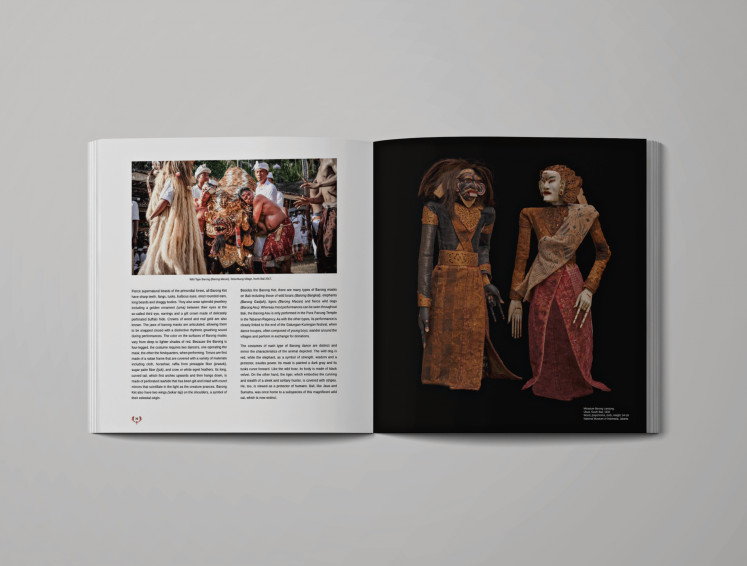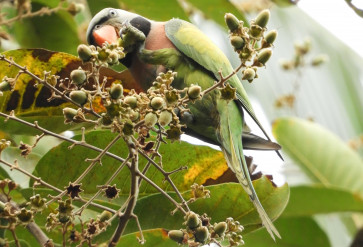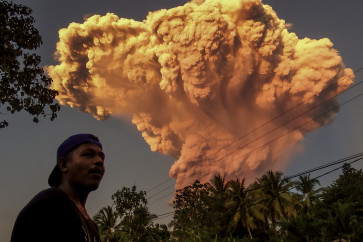Popular Reads
Top Results
Can't find what you're looking for?
View all search resultsPopular Reads
Top Results
Can't find what you're looking for?
View all search resultsBook Review - Masks of Bali: Between Heaven and Hell
Masks of Bali: Between Heaven and Hell is a comprehensive study on Balinese masks.
Change text size
Gift Premium Articles
to Anyone

C
reated according to sacred protocols, masks or topeng are recognized as living beings that receive unique offerings every 210 days. Exquisitely carved from the fine-grained white timber mainly from the sacred Pulu tree Hindu mythology recounts the tree as a manifestation of a drop of Siwa's holy sperm. However, there is much confusion concerning what is and is not authentic traditional Balinese masks used for ritual theatrical means. This is especially true post-1970 with the introduction of foreign styles and hybrid creations in the mask-making epicenter of Mas village, Gianyar. One of the objectives of Masks of Bali: Between Heaven and Hell is to address this uncertainty and set the story straight for future generations.
After more than four years of detective-like investigation and teamwork examining archives and collections worldwide, the luxurious 612-page double volume was launched in Sanur, Bali on Dec. 20, 2022. Written by Balinese cultural authority and scholar I Made Bandem and American art historian Bruce W. Carpenter, this splendid documentation of the ancient art form is richly illustrated with over 1000 color images by photographer Doddy Obenk. A foreword by President Joko “Jokowi” Widodo distinguishes the book.
Volume One, 243 pages long, is dedicated to informative knowledge beginning with a historical framework. In Masks of Gold, Masks of Wood, Carpenter’s essay examines historical and pictorial records proposing a map and chronology distinguishing Balinese mask dances into two eras, of which the first dates back to the Neolithic Period. The earliest known Balinese mask is from the Bronze Age (400 BC-400 CE) and was discovered in West Bali. Tribal mask traditions of Indonesia date back thousands of years and provide the basis for comparisons with that of the Balinese.
The next period is after Hindu and Buddhist influences arrived in the archipelago, a part of a royal Pan-Asian tradition dating to the 7th century. Evidence confirms a sophisticated mask theater in Bali from the 8th century. A double-page map illustrates the spread of the Hindu-Buddhist cultural influence throughout Asia and down into Indonesia. Carpenter notes, “Mask dances existed before the rise of the Hindu-Buddhist kingdoms but were recast in this period in new courtly surroundings as dramatic focal points.”

Living Balinese Mask Dances, Bandem’s leading essay, is devoted to traditional mask performances and dances. The nine masks’ traditions are distinguished by their iconography and function, including Topeng Brutuk, Barong, Barong Landung, Barong Dingkling, Wayang Wong, Topeng Ragnda, Topeng Bidadari, Topeng Babad and the oldest Topeng Gadja Mada. The first mention of mask dancing is within a 9th-century inscription. Masks have functioned ever since as ritual, historical, educational and spiritual objects while being viewed as a means of communication and popular entertainment.
“The Balinese also strongly believe that gods, ancestors and powerful nature spirits can act as bridges to achieve spiritual unity and higher consciousness. Masks and dance performances, which dramatize Balinese beliefs and religious life, are perceived as manifestations of these powers and aims,” writes the acclaimed third-generation dancer who obtained a PhD in Ethnomusicology at the Wesleyan University, the United States.
Essays The Inside I, II & III feature Tale of a Mask Dancer, a personal reflection by the author. Bandem’s extensive knowledge of mask performance stems from his father, I Made Keredek (1906-1979), a famous mask dancer and teacher who traveled the island performing and teaching. Making Sacred Masks describes the creation processes and Master Mask Makers & Dancers highlights fourteen celebrated figures. Finally, Topeng Gadja Mada describes how former president Soeharto burrowed masks from a Blahbatuh temple, keeping them in Jakarta for three years to magically protect the country’s unity.
An essential aspect of the book comes to light via Bandem’s role as an activist, shifting our attention to the rapid loss of culture. “More than a century of tourism and modernization has also taken its toll,” he writes. “The biggest challenge to maintaining and continuing a strong mask dance theater is the increasing number of dancers who have not undergone proper training but nonetheless perform.”
An interesting fact that Bandem describes is that the dance Tari Lepas has evolved as a new performance style fusing random snippets and high points of many dances so audiences would stay energized. He notes, “The greatest threat to Balinese traditional culture and mask dances, however, is the rise of popular media.”
Volume Two is a 360-page gallery, a rich photographic essay of masks dating back to the 17th century and earlier, yet mainly from the late 19th and the first half of the 20th century. The masks are sourced from museums, associations, temples and public and private collections locally and internationally. In addition, there is an investigation into sacred masks from rare dances never before photographed and the inclusion of scarce historical photos.
Masks of Bali: Between Heaven and Hell is a significant and monumental production weighing 7 kilograms. This entertaining read will inform scholars and those specialized in Balinese studies and a general audience, including people interested in international performing arts, sculpture, Asian art and history. Published by Talisman Publishing, Singapore, in 2022 in a hardback slipcase, every attention to magnificent aesthetic detail is made by designer Ni Luh Ketut Sukarniasih.
Masks of Bali: Between Heaven and Hell
Available online through www.tapellestari.com
Words: Richard Horstman
Images courtesy of Tapellestari









